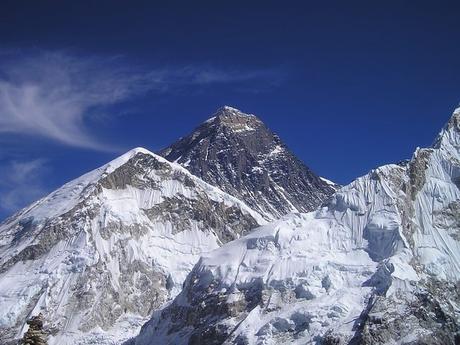Climate change is now showing its worse effect on Mount Everest exposing dead bodies of climbers who died while scaling the world’s highest peak as the snow and glaciers started melting and thinning for high temperatures.
“Due to the impact of climate change and global warming, snow and glaciers are fast melting and dead bodies are increasingly being exposed and discovered by climbers,” former Nepal Mountaineering Association President Ang Tshering Sherpa told CNN in a March 21 report.

Since the first recorded climbing death in 1922, 200 people and more have died on Mount Everest, and maximum bodies believed to remain buried under the glaciers and snow. The studies disclosed that warmer temperatures are now melting glaciers throughout the Himalayas.
As per a 2015 study, the ponds on Everest’s Khumbu glacier were joining together and growing in size and are also the common venue for most of the dead bodies that were discovered recently. BBC News reported that when a research team drilled the glacier in 2017, they found it was warmer than expected.
Dead bodies were also found near the Camp 4 area where a hand came out of the ground surrounding Camp 1 in 2017. The body was later removed.
“It’s a very serious issue because it’s increasingly common and affects our operations,” Nepal National Mountain Guides Association official Sobit Kunwar told CNN. “We are really concerned about this because it’s getting worse. We are trying to spread information about it so that there can be a coordinated way to deal with it.”
“Since 2008 my own company has brought down seven dead bodies of some mountaineers, some dating back to a British expedition in the 1970s,” said Ang Tshering Sherpa.
Nepal is becoming affected by climate change rapidly, and glaciers are melting every year by a meter in parts, and the numbers of climber’s dead bodies are increasing.
The government rarely had taken any responsibility to find out a solution to the problem as per the treasurer of the Nepal National Mountain Guides Association, Tenzeeng Sherpa. “We have not seen the government taking any responsibility,” he said. However, as per Nepal’s law, government agencies required to be involved with dead body handling as told by officials with the Expedition Operators Association of Nepal (EOAN) to BBC News.
“This issue needs to be prioritised by both the government and the mountaineering industry,” EOAN President Dambar Parajuli said. “If they can do it on the Tibet side of Everest, we can do it here as well.”
Recovery of dead bodies and removing them from the higher camps can be both risky and expensive. The bringing down of dead bodies cost between $40z/c,000 to $80,000 as experts told BBC News. Ang Tshering Sherpa told CNN about a dead body which was found near the peak at 8,700 meters (approximately 28,543 feet).
“The body weighed 150 kilograms (approximately 330.7 pounds) and it had to be recovered from a difficult place at that altitude. It was a Herculean task,” he said.
According to Mount Everest expedition operators, when they found bodies, it was their duty to bring them down even if it takes longer to procure funds from the government for removing the bodies, Ang Tshering Sherpa said. However, it’s not always what the climber wanted as mountaineer Alan Arnette told BBC News.
“Most climbers like to be left on the mountains if they died,” Arnette said. “So it would be deemed disrespectful to just remove them unless they need to be moved from the climbing route or their families want them.”
Climate change was not the only reason behind the discovery of bodies in maximum number though agreed by most of the people interviewed on this issue. The Khumbu Glacier’s movement is also one of the reasons behind exposing off more bodies.

